|
Continuous glucose monitors are becoming all the rage these days. For those of you who are new to CGMs, they check your blood sugar every 5 minutes for about 10 days. With such frequent testing, without having to prick your finger over and over again, you are able to see real time data on how what you are eating NOW impacts your blood sugar.
Why should you care? Repeated suboptimal elevations in blood sugar levels can lead to inflammation and promote cellular aging. High blood sugar levels leads to the production of advanced glycation end products, otherwise known as AGEs which can lead to chronic health conditions and accelerated aging. Excessive spikes are also a risk factor for developing type 2 diabetes, heart disease, kidney disease, Alzheimer’s, etc. So I decided to try it for myself. Why? Because I love n of 1 experiments and I wanted to see how my dietary choices, my lifestyle, my exercise, and my sleep affected my blood glucose levels. I used a Dexcom G6 for 10 days. The first 5-6 days I ate as I normally would. The remainder of the days I adjusted things to try to achieve what I considered optimal glucose management. Based on research I had done (here, here, here, and here), the goals I wanted to achieve were:
So what did I learn about myself?? Well, that's what is so interesting…I learned a lot! Without the insight of the CGM I would never have this deep understanding of what I can do to tweak things to better control my blood sugar, reduce inflammation and AGEs, and ultimately support optimal health. Here is what I learned:
Overall, what I learned just confirmed what I knew, but also individualized things based on ME and MY current lifestyle. Currently I am a breastfeeding mama of two, that prioritizes quality balanced meals with lots of veggies, that isn’t exercising hardcore (rather just taking long walks most days), and getting VERY bad sleep. This experiment showed me that yes, I can make sure my blood sugars are well controlled if I am more mindful of my food choices and my exercise, despite having very poor quality sleep (which unfortunately negatively impacts insulin sensitivity). Interestingly breastfeeding helps increase insulin sensitivity, so together these two factors are likely a wash at this point for me. So based on this experiment, what will I change?
Now I am curious what will happen when I stop breastfeeding and my sleep quality improves… Maybe then I will reach for another CGM experiment! And just for those of you who are curious, the pictures below are a fews of the meals and snacks that met all my blood sugar goals.
0 Comments
Planning and Preparing for My Second Pregnancy As a commercial fisherman’s wife whose husband is gone April through September, I have to plan my pregnancies. There really is only a very short window of time to conceive. Once we finally decided that we did indeed want a second child, we opened up January, February, and March 2022 as potential conception months. If we didn't get pregnant during that three month window we decided we would only have one child. But alas, luck was on our side and we got pregnant in February, honestly the perfect month. That gave us a due date of November 13th, neither too close to Dane’s homecoming in October nor right in the midst of the holidays. A November baby would allow us to have plenty of time together as a new family of four before my husband would have to leave again. My pregnancy spacing of three years was very intentional. I wanted to fully recover my nutrient stores after a 22 month breastfeeding journey with my first kiddo and regain full strength in my pelvic floor. Plus, I thought having a more independent preschooler would hopefully make the solo parenting of two kids a tad easier?? Luckily as a dietitian I have access to tools to easily assess my nutrition status including a comprehensive micronutrient test through Vibrant America and a hair tissue mineral analysis through Trace Elements Lab. Furthermore, I check some maintenance labs 1-2x per year just to make sure everything is on point. I offer all this testing to clients of Happy Belly as well. Lab Testing & Wellness Support Prior to getting pregnant I had already been working on addressing nutrient deficiencies (zinc, K2, and coQ10, as well as other nutrients that were in suboptimal range) that I had tested a year prior via diet and supplementation. Then in January 2022 I ordered a hair tissue mineral analysis (HTMA) test to check my mineral status and my nervous system state. The results highlighted that I was low in my macrominerals magnesium, calcium, potassium, and sodium, and that I needed to really focus on managing my stress. Based on the results I started back up on my magnesium supplement and became very intentional about my dietary calcium, sodium, and potassium sources to ensure I met my needs. Both of these tests are great tools to complete at any time in your preconception journey. At the beginning of my first trimester I also ordered my own personal blood labs including full thyroid and iron panels, CBC, CMP, vitamin A, vitamin D, vitamin B12, folate, RBC magnesium, copper, ceruloplasmin, and zinc. The results highlighted suboptimal vitamin A, magnesium, and zinc levels. With the above blood lab results along with my HTMA results I was able to implement my own unique food and supplement routine. Along with addressing my nutrient status and stress levels, I went to see Dr. JoAnne at Rooted in Wellness Chiropractic. She uses more tonal chiropractic techniques along with diagnostic tools to test your sites of muscle tension and your current nervous system state. With her adjustments and my individualized nutrition support I was able to recalibrate my nervous system to be the best she has seen. I continued to see her throughout my entire pregnancy to support my alignment and overall wellness. I highly recommend that anyone local to Bellingham reach out to her as well! Pregnancy Journey Otherwise, my second pregnancy was very similar to my first. No complications and no real complaints. I also gained similar amounts of weight with each, about 25-30lbs. During my first trimester I did experience some mild nausea and fatigue during weeks 6-8, but that cleared up pretty quick. Eating balanced meals, with a big focus on protein rich foods, really helped keep my blood sugars stable and my nausea and fatigue within control. I also had some mild constipation, but I knew how to keep things moving. In addition to a whole foods diet rich in fiber, I focused on drinking plenty of coconut water and enjoyed a variety of papaya, kiwi, chia seeds, and Nancy’s Probiotic yogurt daily. The second trimester went by really fast, it was summer after all. I intentionally reduced my client load, and tried to find more “quiet solo time” usually as a nature walk. Throughout my entire pregnancy I made sure to walk every day if possible. My daily goal was 3 miles. Sometimes it was more, sometimes it was less. And sometimes, I didn't get any “real” movement in, and that was okay too. I tried to give myself grace when it didn't work out like I intended. Honestly, pregnancy and postpartum are the most important times in your life to try and chill out. The harder you work, and the more you add to your list, the more you dig yourself a hole. So please, don't try to do it all. If you can take things off your list, reduce your exercise intensity if you are used to pushing yourself hard, and find some time to just relax. During my mid second trimester I also repeated my blood labs and completed another HTMA test to see what dietary and supplement adjustments I might need to make. Magnesium levels dropped a little bit (not surprisingly because pregnancy increased magnesium demand so much), so I increased my magnesium supplements again from 240mg to 360mg and took them every day religiously before bed. The third trimester was smooth sailing as well. I tested negative for gestational diabetes and Group B Strep. Woohoo! However, based on current classifications of anemia during pregnancy (hemoglobin <11g/dL), my labs at 27 weeks indicated “slight anemia” at 10.9g/dL. Currently there is much debate in the medical field around classifying anemia with a cut off of <11g/dL or <10.5g/dL. Many argue that 10.5g/dL should be the true cutoff point due to the natural hemodilution that happens in the late second trimester and early third trimester. Therefore, I declined the three IV iron infusions that were suggested by my nurse midwife and instead continued to focus on eating 2-3oz of liver per week and eating grass-fed red meat almost daily. I only supplemented with a small dose of easy to digest iron bisglycinate (28mg) occasionally when I did not eat liver or red meat, which was about 2x per week because my prenatal did not contain any iron (which is intentional). I am very cautious with iron supplementation as there are both benefits and risks to assess and personally don't agree with blindly supplementing high dose iron or IV iron infusions unless there is a true need. Generally speaking “mild” cases of anemia (hemoglobin of 10 - 10.9g/dL per WHO) respond beautifully to dietary interventions and do not need high dose iron replacement or iron infusions. Normally over the course of the third trimester hemoglobin levels rise naturally from their lowest levels around 24-30 weeks of pregnancy. So if hemoglobin levels were fine all throughout your first and second trimesters, and then dip, know that they will start increasing again at 33 weeks. If you start your pregnancy with a hemoglobin of <12g/dL you may need earlier interventions (food first, then supplementation) to avoid more moderate or severe anemias later on in pregnancy. As you can see, iron metabolism during pregnancy is much more complicated than just replacing iron. Along with normal hemodilution during the third trimester, there are other nutrients of concern, including vitamin A and copper which play an essential role in iron metabolism that unfortunately are never tested for or mentioned in the traditional health care model. Furthermore, in addition to checking vitamin A and copper, testing a full iron panel along with ferritin instead of just hemoglobin is ideal to assess true iron need. So please, work with a skilled dietitian to help guide you throughout your unique journey. And just to note, with my food focused interventions and the natural increase in hemoglobin concentration my hemoglobin levels were at 13g/dL at the time of delivery. No IV infusions needed and no harsh ferrous sulfate supplements. Yay for self-advocacy! Birth Since I was considered a “geriatric pregnancy” this time around, I did have more ultrasounds and weekly non-stress tests during the last four weeks of my pregnancy. Luckily the results all came back great and I was able to push back the suggested 39 week induction to the middle of my 40th week. I hoped I wouldn't need it. I hoped that the baby would come before 40 weeks just like my son Toren. But alas, my journey this time around was not the same. At 40 weeks and 4 days, I was admitted to Peace Health Child Birth Center to start my induction process. After a week of processing high and low emotions, and the wonderful support and guidance of a dear friend, I arrived at the Child Birth Center feeling very grounded, empowered, and ready. Ready to have an amazing labor. I left fear behind me, and entered with such presence. I had an amazing team ready to help me have the best experience - my nurse midwife, two awesome Labor & Delivery nurses, and of course my amazing husband. Since I was only 2cm dilated my induction process started with Cervidil – a cervix ripening prostaglandin that is inserted vaginally. My midwife said, “We will wait 4 hours, and then check how far you are at that point. If you are 3cm or more, then we can start Pitocin”. With four hours of waiting time, my nurse helped me through a Miles Circuit (to help get baby in the best position) and she massaged my hips to help release and relax my ligaments. I also got to enjoy a steaming hot bowl of delicious Pho and a side of diced papaya and lime that my husband brought me for lunch. And then it was go time. At 1pm my midwife checked me again and said, “You're at 3 cm, we can start Pitocin or do another round of Cervidil”. I asked the nurse what dose is usually required to help kickstart labor for women and she said that it ranges between 8ml/min to 20ml/min. I opted for Pitocin, and jokingly said “Hopefully I will only need a little Pitocin Kiss to get going”. With Pitocin they generally start at 2ml/min and increase by 2ml every 30 minutes until contractions start to get intense. With the first 2ml, I noticed gentle contractions. By 4ml/min I had to do some breathing through them, and by 6ml/min I was groaning through my contractions and moaning my mantras “Opening”, “Releasing”, and “Sensation”. When the nurse came in to check in on me at 4:30pm my water broke. It felt like a water balloon had popped inside me. Then things got really intense fast. They started to titrate the Pitocin back down again, and eventually weaned me off. So indeed all I needed was a little “Pitocin Kiss” to get my body to do its own thing. At 5pm they checked me and I was at 5cm. With the support of my amazing husband I continued to labor another hour with my mantras and deep groans and relaxed in between contractions with deep breathing, cold wash cloths, and the loving touch of my husband. At 6pm I hit transition, the intense contractions that leave you shaken to your core. I was checked again and I was at 9.5cm. “You’re ready to start pushing!” said my midwife. And so I did, surrounded by my amazing support team. After 20 minutes, my husband caught our 8lb 2oz baby and announced that it was a girl – the most amazing blessing I could have ever asked for! My little golden girl Aspen finally made her debut. She immediately came to my chest, latched to my breast right away, and the cord clamping was delayed at least 5 minutes if not longer (time has no meaning so it’s hard to know exactly). I was so in love, so blissed out, and so extremely happy. I did it! I was 200% there mentally, emotionally, and physically…and for an extra bonus I didn't even tear. Phew! Although I was much more present with myself this time around, I felt much more disconnected with this pregnancy. I have talked to many mamas and most agree they felt the same. Life is much busier when you have another kiddo in tow while you are working and pregnant. It’s also not your first rodeo. The “new” excitement isn’t there. You have been there done that already. I also struggled with an intense worry that I wouldn't be able to love my second child as much as I loved my first. But trust me….this is NOT something you need to lose brain cells on. Aspen has shown me that your heart can grow twice as big to allow for so much more love than you could have ever imagined. And now as a family of four we navigate the change of pace and adjust to the ebbs and flows of this wonderful journey. My Second Pregnancy Tools, Diet, and Supplements: IMPORTANT DISCLAIMER: This is not medical advice. This is what I did based on my unique needs. Please talk to your health care professional and/or dietitian to see what is right for you.
Stay tuned for my postpartum update!
First of all I want to start off with a fun fact, not all fiber is the same, nor does it work the same in the gut. Fiber can be complicated. However, today I am going to try and break it down for you. Dietary fiber refers to plant carbohydrates that we humans cannot digest because we lack the digestive enzymes to break them down. These fibers include cellulose, hemicellulose, pectin, lignin, gums, beta-glucans, fructans, galactooligosaccharides, and resistant starches. Each part of the plant (stem, root, leaf, etc) and its age all are factor into what fibers are present upon consumption. See Table 2 below for more info on each type of dietary fiber. SOLUBLE VS INSOLUBLE There are two main categories generally used to categorize dietary fiber – soluble fiber and insoluble fiber. We need both for optimal gut health. Soluble fiber dissolves in water and often has a high water holding capacity, creating a gel like (viscous) substance. This gel like substance can firm up and soften stool, and therefore can help reduce severity of diarrhea while also softening hard stools. However, it also slows down the speed of which food/fibers travels through the gut and can reduce the absorption of nutrients. Soluble fiber is also highly fermentable by gut bacteria. Insoluble fiber on the other hand, does not dissolve in water, does not create a viscous gel, and generally is poorly fermented. Instead it acts like straw, bulking up the stool, supporting movement out, and cleaning the gut along the way helping to slough off dead cells. Soluble fiber is more gentle and can be better tolerated if someone has gastritis or intestinal inflammation, while insoluble fiber is more rough and can be irritating to inflamed tissue. FERMENTABILITY Although both soluble and insoluble fibers can be degraded by colonic bacteria, soluble fibers are fermented at a much higher degree. Fermentation of fibers usually happens in the first part of the colon, where bacteria breakdown the fibers that we cannot digest and produce hydrogen gas as a byproduct. Therefore, fermentable fibers are known as prebiotics, or food for good gut bacteria. The most fermentable dietary fibers include fructans, galactooligosaccharides (GOS), pectin, gums, beta-glucans, and resistant starch type 3. Fermentation produces energy for the beneficial microbes and provides humans with short chain fatty acids (mostly acetic acid, propionic acid, and butyric acid). Short chain fatty acids provide humans with a lot of different health benefits including 1) they stimulate mucous production in the colon which aids in elimination and encourages the growth of akkermansia (a keystone species of gut health), 2) they decrease the pH of the colon which prevents the growth of pathogenic bacteria, 3) they provide fuel for the colon cells, 4) they enhance immune function, 5) they help prevent colon cancer, and 6) they can inhibit cholesterol synthesis in the liver. Each unique bacteria preferentially ferments different fibers and therefore produces different types of SCFAs. Therefore, in order to reap these benefits, we need to eat a wide variety of plant fibers. VISCOSITY Viscosity, or gelling power, varies amongst fiber types. Some soluble fibers are viscous and all insoluble fibers are not. The higher the viscosity, the greater the gelling power, and the higher the water holding ability. Viscous fiber SLOWS stomach emptying and stool transit time. Therefore, it can help increase satiety and provide relief when struggling with loose stools. However, if soluble fiber is also fermentable (most soluble fiber), then it does not provide constipation relief. Since fiber is fermented in the first part of the colon, it loses its water holding capacity, and may therefore contribute more towards constipation (especially in supplemental forms like wheat dextrin). However, if the soluble fiber is highly viscous and NOT fermentable, like psyllium, it can increase stool water content throughout the entire length of the colon, providing relief for both loose stools and constipation. Viscous fiber can also reduce absorption of nutrients by binding to them and reducing digestive enzyme function. Therefore, highly viscous soluble fiber is found to be helpful at reducing cholesterol and blood sugar levels. However, if someone is already struggling with malnutrition or nutrient deficiencies, too much soluble fiber may further impair nutrient absorption. BUT, if stools are loose, slowing them down with soluble fiber, will increase the time allowed for nutrient absorption, thereby increasing the ability to absorb nutrients from the diet. Soluble and viscous fibers include pectins (apples, citrus, berries), gums (oats, barley, legumes), beta-glucans (oats, barley, rye, and mushrooms), and psyllium. They are all highly fermentable, except psyllium. The more processed (heat & pressure), the less they retain their viscosity. Therefore, muesli eaten cold with yogurt is going to retain more of its viscosity than Cheerios. Another example would be a functional fiber, partially hydrolyzed guar gum (PHGG). This functional fiber has been chemically altered to remove the viscosity of raw guar gum. Therefore it no longer has gel forming properties but remains soluble and fermentable. NON-FERMENTABLE, NON-VISCOUS INSOLUBLE FIBERS Non-fermentable, non-viscous, insoluble fibers not only provide benefit by increasing fecal bulk and speeding up transit time, they also support detoxification. Since insoluble fibers help support regularity, they are essential for eliminating environmental toxins, chemicals, and excess hormones. If stool stays stagnant in the colon for too long, we can reabsorb these chemicals, toxins, and hormones, leading to increased inflammation and hormonal imbalances, and eventually leaving us feeling crummy, fatigued, and inflamed. Can anyone relate? If you don't have your daily poo, you don't feel like you?? Insoluble fibers also help increase stool bulk which aids in the laxation of the colon and reduces straining. Interestingly, research shows that the larger the fiber particle, the more potent the laxative effect. Therefore coarse wheat bran, which is high in insoluble fiber, is a much more effective laxative than fine wheat bran. YOUR LIKELY NOT EATING ENOUGH FIBER Unfortunately, 95% of Americans are not getting enough fiber. That means only 5% of Americans are actually meeting the daily recommended intake of 26-38g per day for women and men respectively. And although you may think you are getting enough fiber, research shows that only 1 in 20 actually do! With the rise of grain-free, bean/legume free, and gluten free diets, daily fiber intake can take a significant fall even in health conscious individuals. Ensuring adequate fiber intake is important because it helps eliminate waste products via stool, increases satiety and supports a healthy weight, and feeds good gut microbes. By eating a variety of plant foods, you will get adequate amounts of both soluble and insoluble fiber and plenty of colorful polyphenols to boot! A general rule of thumb is to aim for ~10g of fiber per meal. If you are not sure how much fiber you are getting each day, track it to get a rough estimate, then make intentional changes. But wait! If you have been eating a low fiber diet, tummy rumbles and gas may be more pronounced initially as the bacterial composition and stool viscosity changes. Therefore, to avoid discomfort make sure to gradually increase fiber over time, drink plenty of fluids, and move your body daily to help support proper elimination. Unfortunately, certain types of fibers may exacerbate GI symptoms for some individuals. For example, if you are struggling with diarrhea, you may want to limit your intake of insoluble fiber rich foods until the diarrhea is resolved. Alternatively, if you struggle with constipation, slowly increasing your insoluble fiber intake can be helpful. If you struggle with SIBO you likely need to be careful with some fermentable fibers, to reduce gas and bloating, until SIBO is addressed. In general, a healthy gut thrives off of a variety of plant fibers. Therefore, just because you cannot tolerate one type of fiber right now, doesn't mean you may not be able to tolerate it again in the future. It just means that you need to be mindful of which fibers you can or cannot tolerate. Ideally, work 1:1 with a gut health dietitian to help you navigate dietary and supplemental fibers and address the root cause of your digestive woes. FIBER SUPPLEMENTS When using fiber supplements, you first have to ask yourself why do I need a fiber supplement? Is your diet lacking in fiber, then definitely start here first, gradually increasing fiber rich foods in your diet. If struggle with diarrhea you start by increasing soluble fiber rich foods and reducing insoluble fiber rich foods until loose stools improve. If this doesn't work, then try psyllium or Benefiber for some immediate support. Whereas if you struggle with constipation, you may consider adding in coarse wheat bran or using psyllium husk for relief. Finally, if you have SIBO then you may want to avoid inulin/FOS fiber supplements and try Sunfiber (PHGG). The table above will help guide you towards a fiber supplement that may help address your current needs. Ideally, work with a gut health dietitian to navigate all the other fiber options available and help you select a fiber supplement to fit your unique needs. And remember, if your symptoms worsen on a fiber supplement, please stop taking it, and ask your dietitian how to proceed. For some fiber rich recipes check out the links below: Turmeric Quinoa Porridge Festive Massaged Kale Salad Hearty Curry Vegetable Soup Whole Grain Harvest Cornbread Lemon Curry Four Bean Salad Mediterranean Hummus FeedMe Belly Bowl Apple Banana Breakfast Muffins Chickpea Skillet Flatbread References: 1. https://www.todaysdietitian.com/newarchives/0718p11.shtml 2. https://jandonline.org/article/S2212-2672(16)31187-X/fulltext 3. https://jandonline.org/article/S2212-2672(15)01386-6/fulltext 4. Gropper and Smith. Advanced Nutrition and Human Metabolism, 6th Edition. 5. https://www.ncbi.nlm.nih.gov/pmc/articles/PMC6124841/ 6.https://www.nutricialearningcenter.com/globalassets/pdfs/specialized-adult-nutrition/webinar-slides_fiberprebiotics_adult-health.pdf?epieditmode=False 7. https://www.ncbi.nlm.nih.gov/pmc/articles/PMC4415970/ In practice, many of my clients come to me not eating enough protein, which is leaving them hangry and fatigued. Often they tell me they cannot go for long periods without eating, and are constantly snacking or grazing. Plus, they are not noticing any improvement in lean body mass despite increased effort at the gym or on the trails. Although the RDA for dietary protein is 0.8g/kg per day (about 10% of calories), this is based largely on the MINIMUM needed to avoid deficiency, but not to support optimal metabolic health. The acceptable macronutrient distribution range (AMDR) for protein is 10-35% of daily calories. However, research suggests that 1.2-1.6g/kg (or about 20% of calories) is ideal for metabolic benefits. For an average 130lb woman eating ~1800kcal per day that equals to 75-90g per day. Interestingly, on average Americans eat about 16% of their daily calories from protein. A vast majority (60%) of that protein is coming in at ONE meal and less than 15g of protein is consumed at breakfast. This practice may not be helping Americans. Researchers have found that a protein intake of ~30g per meal has positive effects on lean body mass and muscle protein synthesis when compared to meals containing <20g per meal. Furthermore, spacing total daily protein out over 3-4 meals is a very positive habit to enforce for many reasons. Find out more below. So why is protein important?? Protein is required for cellular growth and repair, the production of enzymes that are necessary for sustaining life, for hormone production (thyroid, dopamine, adrenaline, melatonin, insulin, etc), for proper fluid balance in the body, nutrient transport and storage, for healthy immune function, and soooo much more. Plus, protein helps increase our satiety hormone leptin, speeds up our metabolism, improves blood sugar control, and reduces snacking behavior. Therefore, by spacing protein out evenly over 3-4 meals per day, you will feel more energized, free of constant cravings, and better to able to listen to your hunger and satiety cues. Without enough protein, especially quality protein, our health declines. What is quality protein? The type of protein you choose is definitely important to meet your health goals. Conventional meats and dairy have a less desirable nutrient profile. Therefore, I recommend a variety of grass-fed beef, wild caught seafood, pasture raised poultry and eggs, pasture raised pork, organic beans and legumes, and organic grass-fed dairy if tolerated. Organic whole grains, nuts, and seeds also provide small amounts of protein. Supplements such as grass-fed collagen peptides, grass-fed whey protein, or organic pea/hemp/rice protein powders can be helpful to meet your goal. Although protein is very important, more isn't always better. Pairing a small portion (4oz) of protein with both carbohydrates and fats is ideal. Not only does this macronutrient balance increase satisfaction (and satiety), it also increases nutrient density, and supports hormone balance. GENERAL TIPS:
Meats, Seafood, & Poultry — 3 ounce portions or ~ 1/2 cup (20-25g) Beans/Legumes — 1 cup cooked (~15g) Meat Alternatives (Extra Firm Tofu/Tempeh) - 3oz (~15g) Whole Grains — 1 cup cooked (~8g) Nuts & Seeds — 1/4 cup whole (~9g), 2 T Nut Butter (~6g) Dairy Products — 1 cup milk, regular yogurt, or 1 oz cheese (~8g) Chicken Eggs — 1 egg (6g) Protein Powders — 1 serving (10-20g) varies a lot depending on the product To those of you who made it to the end, thank you! Are you mindful of your protein intake? Are you already meeting the goal of 25-30g per meal or is it a struggle for you? I would love to hear from you. Let me know in the comments below!
Eat Happy, Selva If you do not or cannot drink cow's milk (or goat and sheep) and rely solely on non-dairy milks, then this post is for you! It's high time for a nut milk makeover!! Not only to boost your health and keep your wallets a bit more full, but also to keep you out of the grocery store as often during these quarantine days. The only tools you need to make a creamy, rich, and smooth nut milk is a high speed blender and a fine mesh nylon nut milk bag. It's soooo simple to make and the quality and cost far outweighs what you can buy at the store. I know I might be preaching to the choir, but there is no shame in repeating it---because we all get lazy, me included. So here is some inspiration to cultivate a nut milk routine. WHY YOU SHOULD PRIORITIZE HOMEMADE NUT MILK Firstly, commercial nut and grain milks are expensive when really they shouldn't be. For example, Califia Almond Milk (which is one of my preferred commercial brands because it doesn't contain carrageenan and is fortified with calcium), costs ~$5 for 6 cups of nut milk. The ingredient list is as follows: water, almonds, natural flavors, calcium carbonate, sunflower lecithin, sea salt, locust bean gum, gellan gum, potassium citrate. For 45kcal per cup you get 450mg of calcium (via calcium carbonate fortification), and about 5 conventional almonds. That's it, for 80 cents per cup of non-organic nut milk. Wow. Secondly, commercial nut and grain milks (and yogurts), are often lacking in calcium because the ingredients are naturally low in calcium. This is unfortunate because dairy free diets if not properly implemented with the guidance of a dietitian or knowledgeable health care provider, may contribute to calcium deficiencies. Some brands, like Califia, are fortified...which is great. However, they use calcium carbonate, a calcium supplement that has a low absorption rate. In addition, absorption is further compromised in situations where individuals have low stomach acid. As we age, we naturally produce less stomach acid, therefore the elderly struggle the most. However, even younger individuals live with inadequate stomach acid levels due to chronic stress, use of TUMS and PPIs, H. pylori infections, hypothyroid, etc. Furthermore, calcium carbonate can be constipating, and cause gas and bloating. So long story short, it's not ideal for many individuals, especially if you are dealing with digestive issues. Thirdly, store bought nut milks contain a lot of stabilizers like locust bean gum, gellan gum, guar gum, xanthan gum, carrageenan, etc. Although these ingredients are deemed safe by the FDA, they may contribute to digestive symptoms such as bloating or discomfort in some individuals. I personally, try to limit gums and additives when possible. IS THE COST AND TIME WORTH IT?? Heck yes! Why spend so much $$ on commercial non-dairy milks for such little quality?? If you are only getting 5-6 almonds per cup, with a good dose of poorly absorbed calcium carbonate, and a handful of fillers, why not make your own with a variety of nuts and seeds?!? What is the cost? For organic, raw, sprouted, and fortified Mineral Rich Pumpkin Seed Milk, I spent close to $2.00 for a 48oz serving (including the fortification with supplements). This comes to about 35 cents per cup. Now, who can beat that price for the quality? If I wanted to increase the creaminess with a full cup of pumpkin seeds versus just a 1/2 cup, it would come to $3 for 48oz, or about 50 cents per cup. If you compare that to a commercial equivalent, Elmhurst Unsweetened Milked Almonds (which provides 19 almonds per cup and costs about $7), it would cost you about $1.75 per cup....and the nuts are not even organic, nor is there calcium added. So, you definitely come out on top if you make it at home. And if you think it takes too much time, think again. From start to finish it takes about 5 minutes to make homemade nut milk. Much less time than a quick grocery store run. THE EVER CHANGING MINERAL RICH NUT MILK So my version of nut milk, is not just any nut milk. Most recipes you see on the web are for almond milk, cashew milk, sunflower milk, etc. Yeah they are great, but why not mix it up a bit? Each nut and seed has unique nutritional benefits. Almonds are rich in vitamin E and magnesium, Brazil nuts are rich in selenium, pumpkin seeds are rich in magnesium and zinc, sesame seeds are rich in calcium, and on and on it goes. Why stick with just the same old almond, cashew, or even oat? Why not make a super rich and creamy nut/seed milk that is always changing?? In addition to choosing a variety of different nuts and seeds, I also make sure to add an easily absorbed powdered calcium supplement, either calcium citrate or whole bone meal powder. Calcium citrate is absorbed about 25% better than calcium carbonate and it does not require stomach acid for absorption. Sometimes, I also like to add sunflower lecithin powder for added creaminess and emulsification. Without the sunflower lecithin, homemade nut milks tend to separate. Plus there is an extra bonus because sunflower lecithin is an excellent source of choline! Unfortunately, 90% of Americans are not consuming adequate amounts of choline per day. Foods richest in choline include liver and egg yolks, as well as animal proteins. Some plants provide choline (Brussel sprouts, soy, and broccoli) but in much lesser amounts. Generally, women need at least 425mg per day and up to 550mg if they are breastfeeding. Therefore, sunflower lecithin can be a great tool for anyone limiting the previously mentioned foods. HIGHLIGHT ON MY CURRENT FAVORITE NUT & SEED COMBO Brazil Nuts These nuts are pretty amazing because just one nut meets over 100% of your daily selenium needs. What is selenium? It is a trace mineral that along with iodine, and zinc plays a very important role in healthy thyroid function and helps reduce oxidative stress within the body. A diet low in selenium can thus have far reaching effects on metabolism, energy, and ability to combat free radicals. However, as with everything too much can be harmful to our bodies as well. Since Brazil nuts are the most concentrated source of selenium, limiting yourself to 1-2 per day is all you need. Pumpkin Seeds If you haven’t incorporated pumpkin seeds into your life, you should start now. These tasty seeds are super rich in minerals zinc and magnesium, both of which are very important for optimal health. Interestingly, many people tend to be deficient in magnesium, either due to poor intake of whole grains, nuts and seeds, or also because the soil is becoming more depleted of this mineral. Either way focusing on getting more magnesium into your diet can have far reaching positive effects. Magnesium can help reduce headaches, reduce cramping, increase overall energy, control blood sugar, and just generally help reduce inflammation. Plus, organic pumpkin seeds are very cheap. What more do you want? GETTING NUTTY
So, get out your blenders, purchase a nylon nut milk bag (it makes all the difference, trust me), and get creative! Swap the pumpkin seeds for sunflower seeds for another low cost alternative, or use a variety of different raw nuts and seeds that you have available right now in your home. Either way, mixing it up, is the best. Out with the old, and in with the MINERAL RICH! No more slacking, it's time for a nut milk revolution!! Fortified Mineral Rich Pumpkin Seed Nut Milk Makes ~6 cups INGREDIENTS 1/2 - 1 cup raw organic pumpkin seeds (or whatever variety of raw nuts and seeds you wish to use) 1-2 organic Brazil nuts 2 tablespoons NOW Sunflower Lecithin Powder 3 teaspoons NOW Calcium Citrate Powder 1/4 teaspoon sea salt Splash vanilla (optional) 1-2 tablespoons maple syrup/honey or 1-2 pitted medjool dates (optional) INGREDIENTS Place the nuts and seeds into a bowl and cover with warm water. Allow the nuts and seeds to soak 4 hours or overnight. Strain and rinse the nuts and seeds and put them into the blender. Add 5 cups water and the remainder of the ingredients. Blend on high for 60 seconds or longer. Line a bowl with the nut milk bag and pour the nut milk into the bag. Squeeze out the milk, leaving behind the nut pulp and fibers. Discard. Add an extra cup of water to your bowl to increase volume to 6 cups if desired. Transfer to a large jar or bottle and store in the refrigerator for up to a week. Note: If you want to kick it up a notch you can also add 1 teaspoon of spirulina to the recipe. Read more about spirulina and its' benefits here, here, and here! Nutrition Facts (per cup)- using 1/2 cup pumpkin seeds: 90kcal, 3.2g protein, 4.5g carbs, 7g fat with 23% of daily value of calcium, 16% of magnesium, 45% selenium, 5% of iron and zinc, and 17% of choline. |
AuthorLike to read? Then get your evidence based nutrition information here! All posts written by Selva Wohlgemuth, MS, RDN Functional Nutritionist & Clinical Dietitian Archives
August 2023
Categories
All
|
Providing custom functional nutrition therapy since 2015.
Follow HBN on Social Media!
©Happy Belly Nutrition, LLC 2015-2023
Proudly powered by Weebly

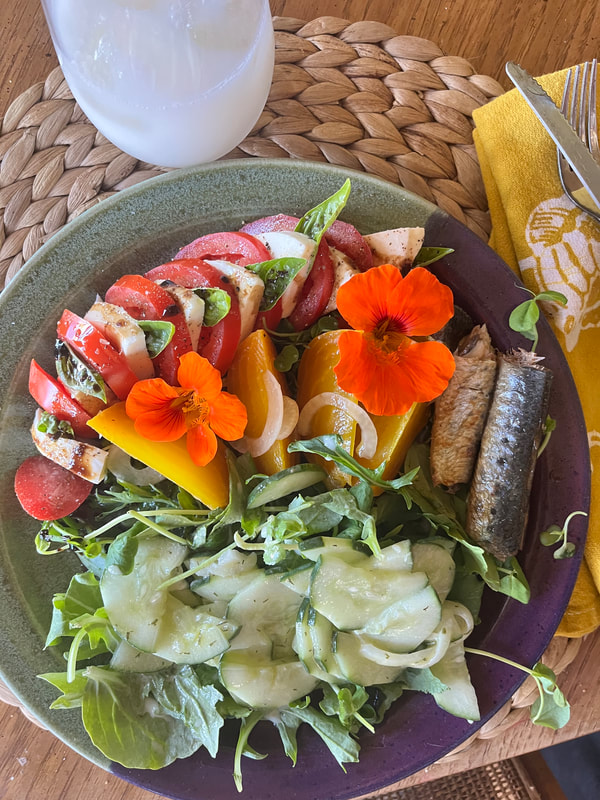

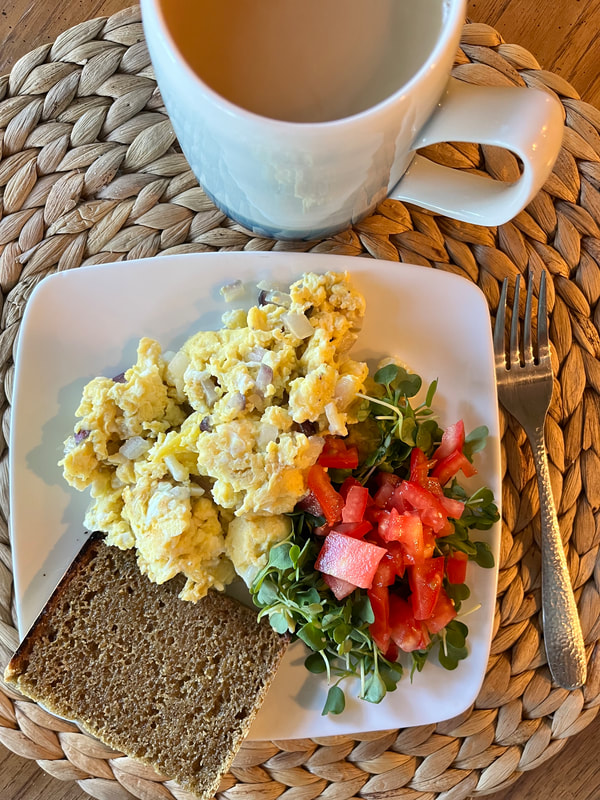
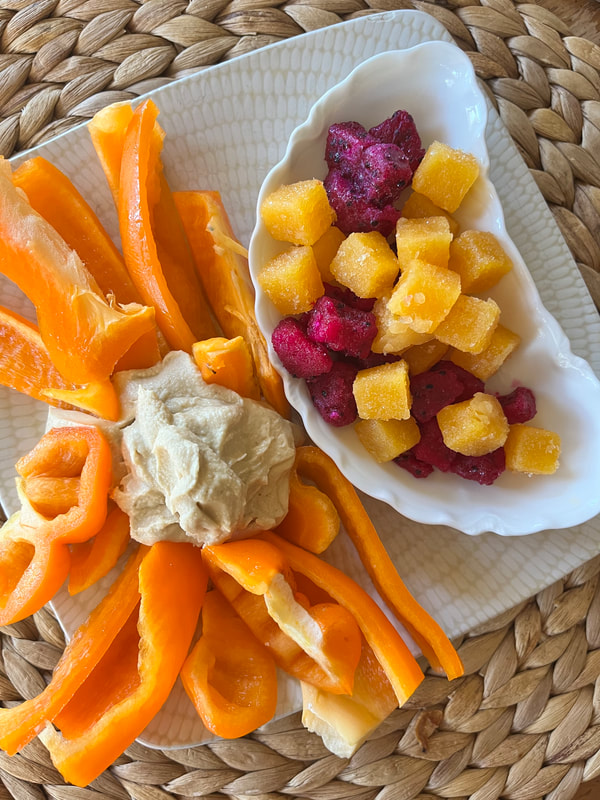

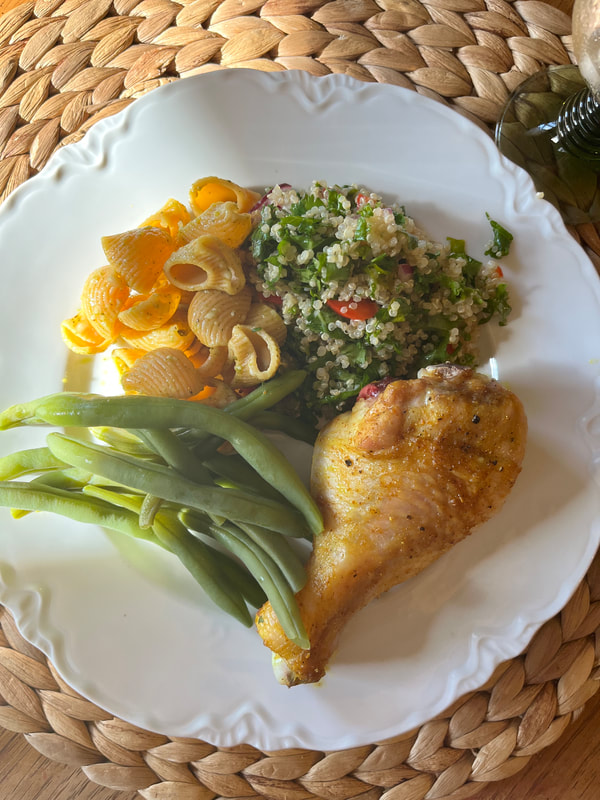
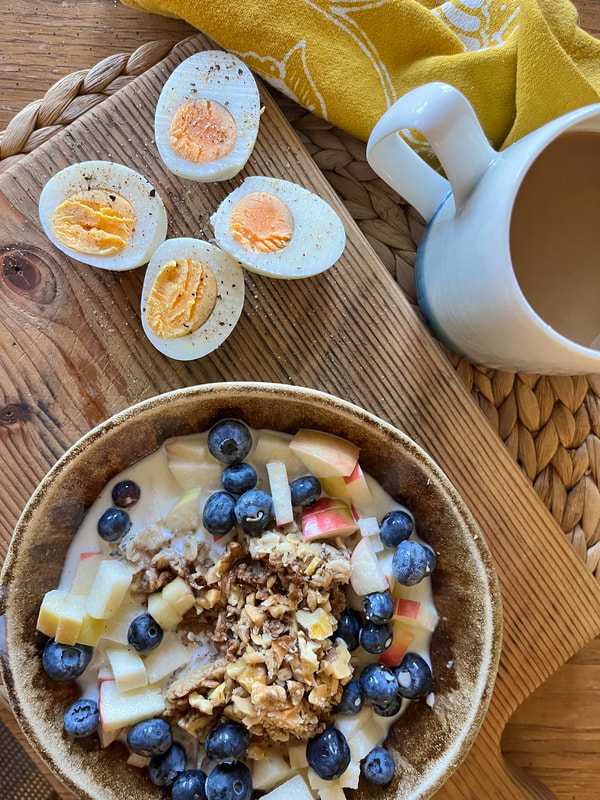











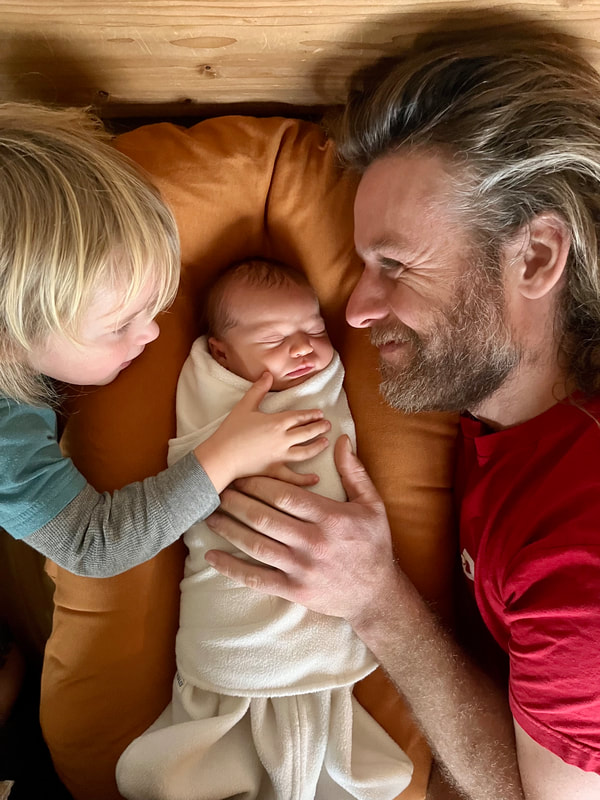
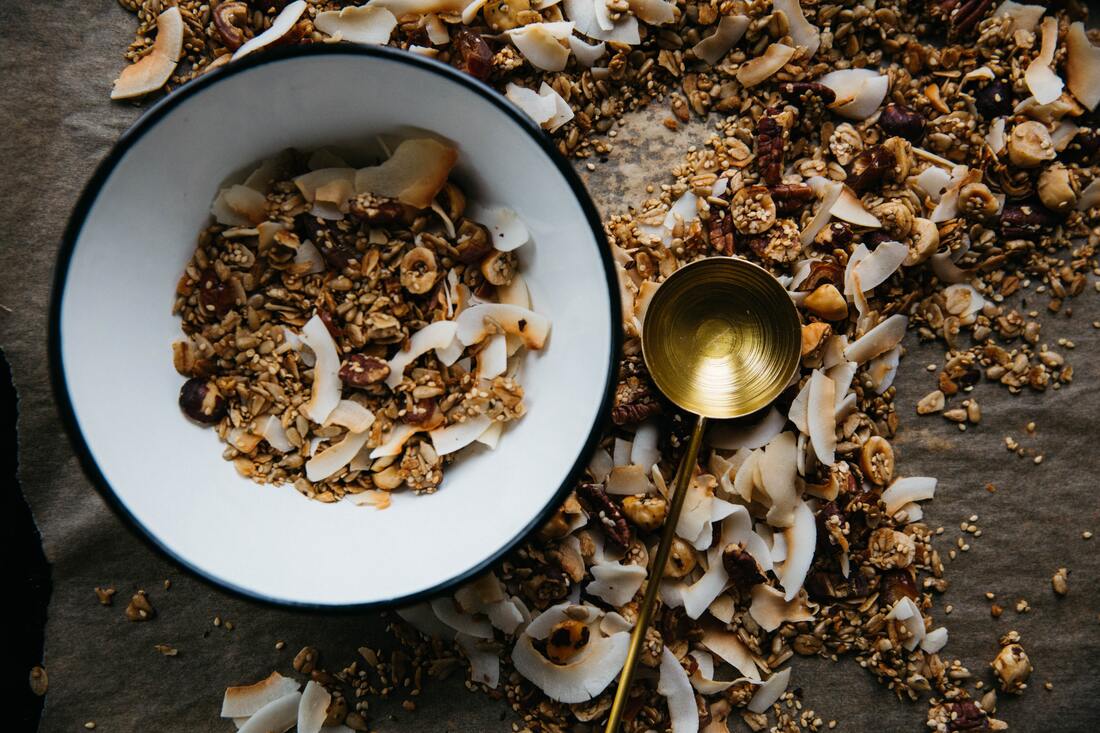
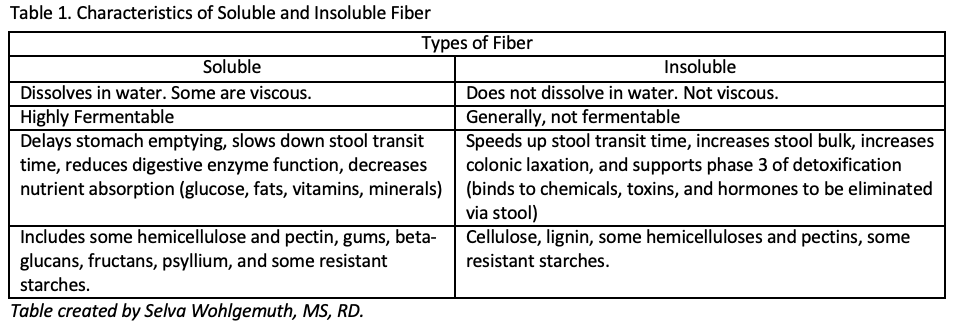
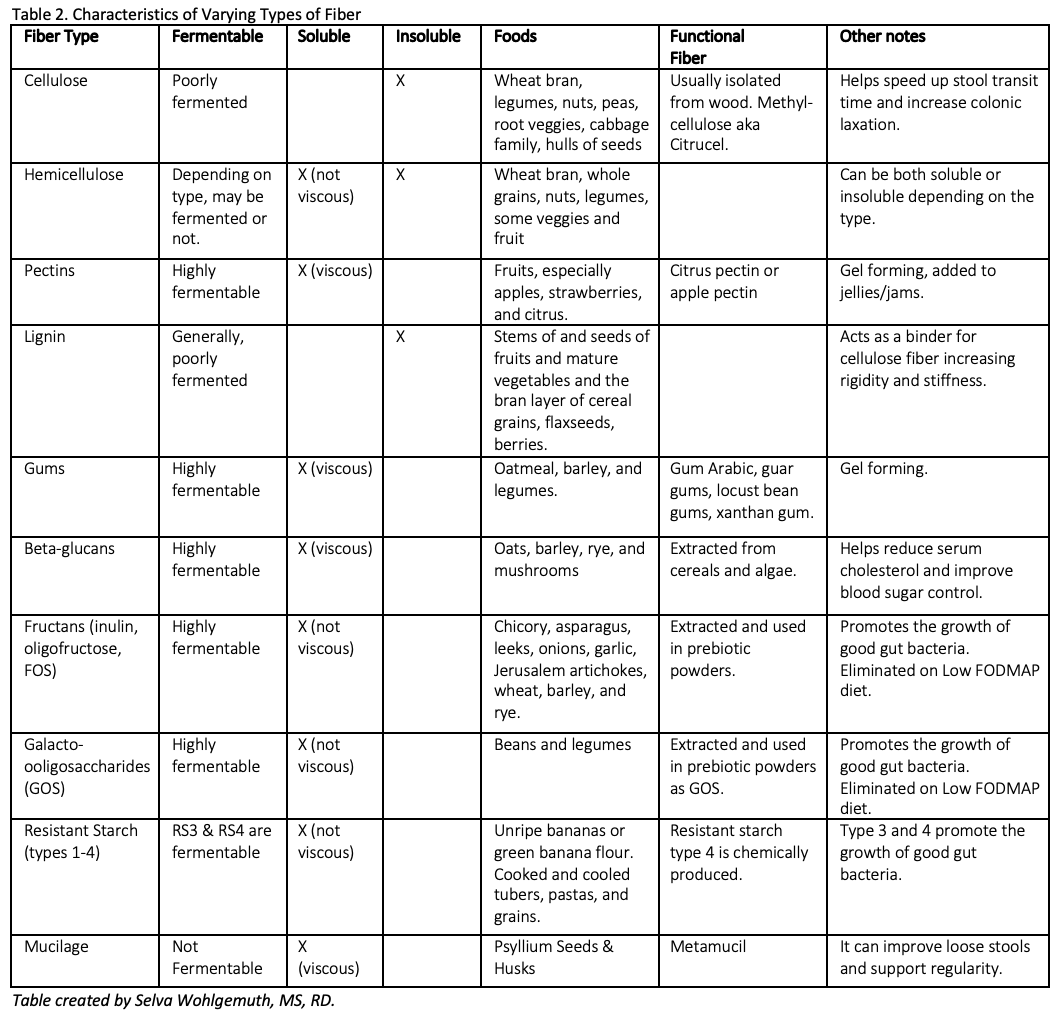
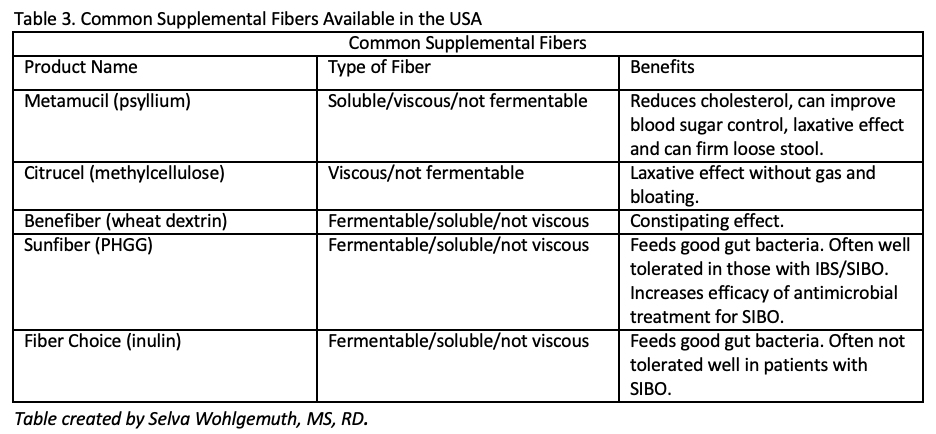
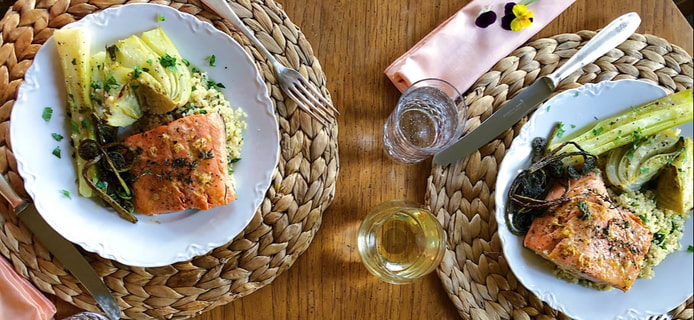

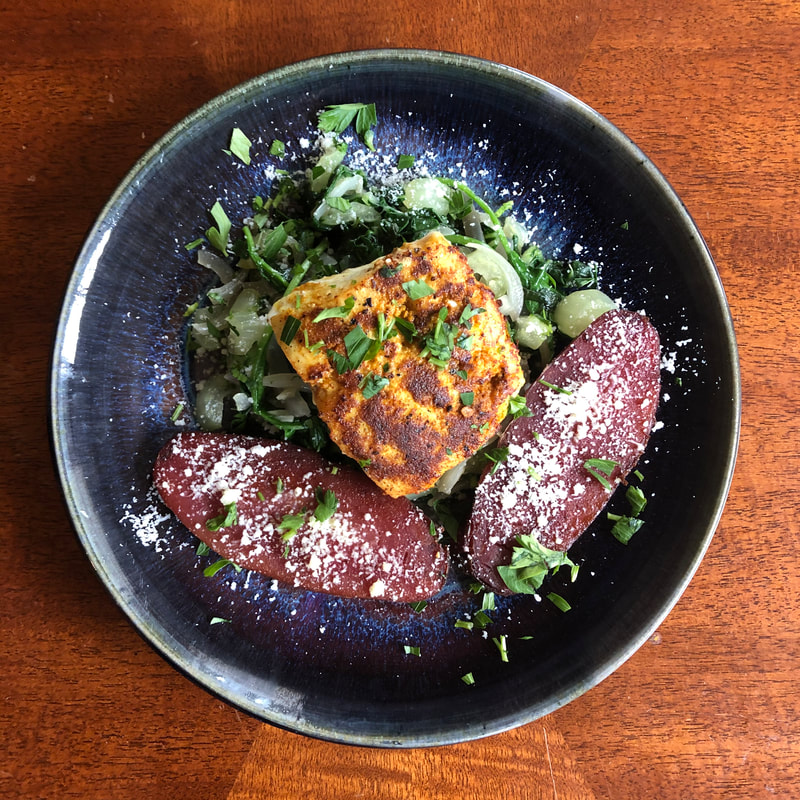
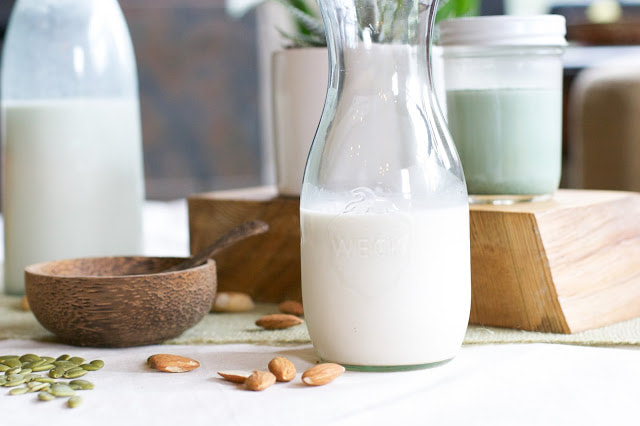

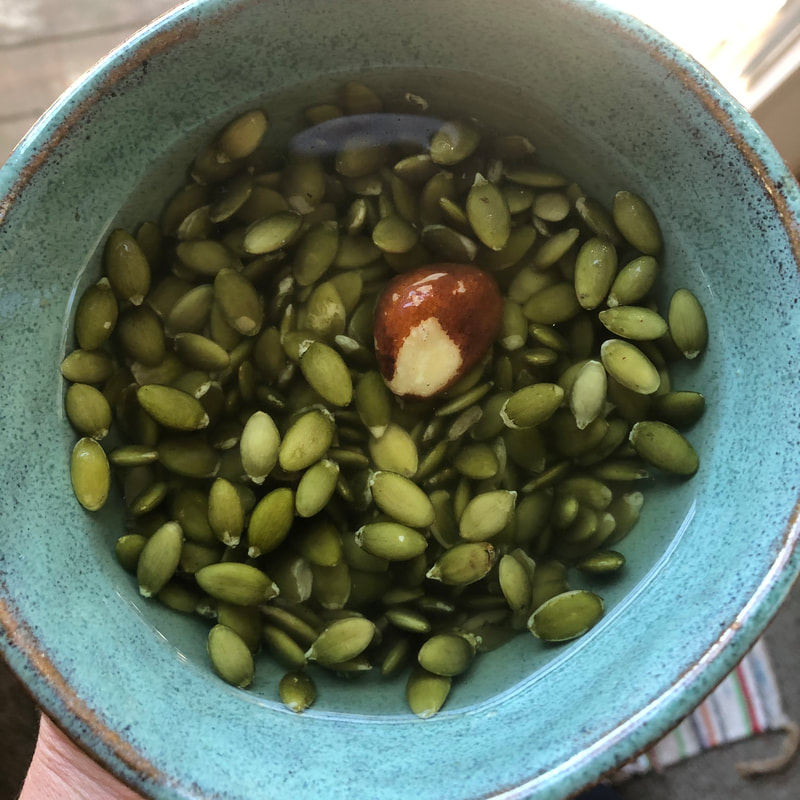
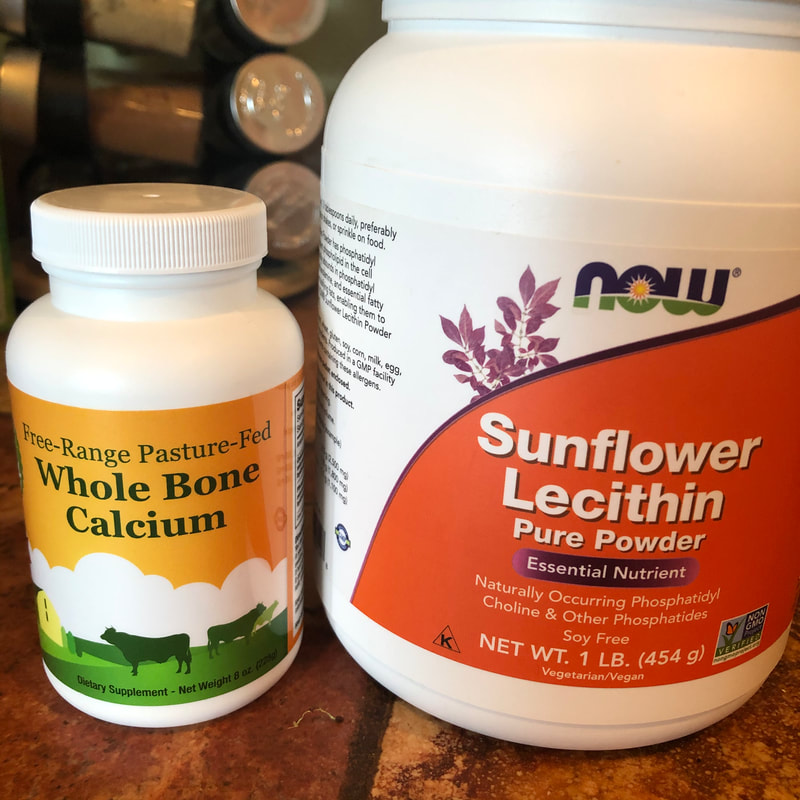
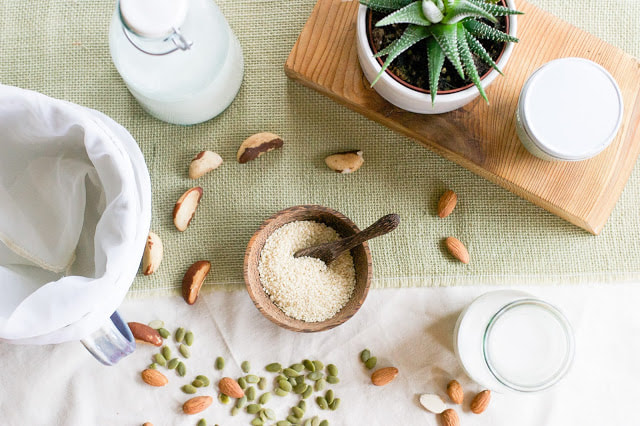
 RSS Feed
RSS Feed


